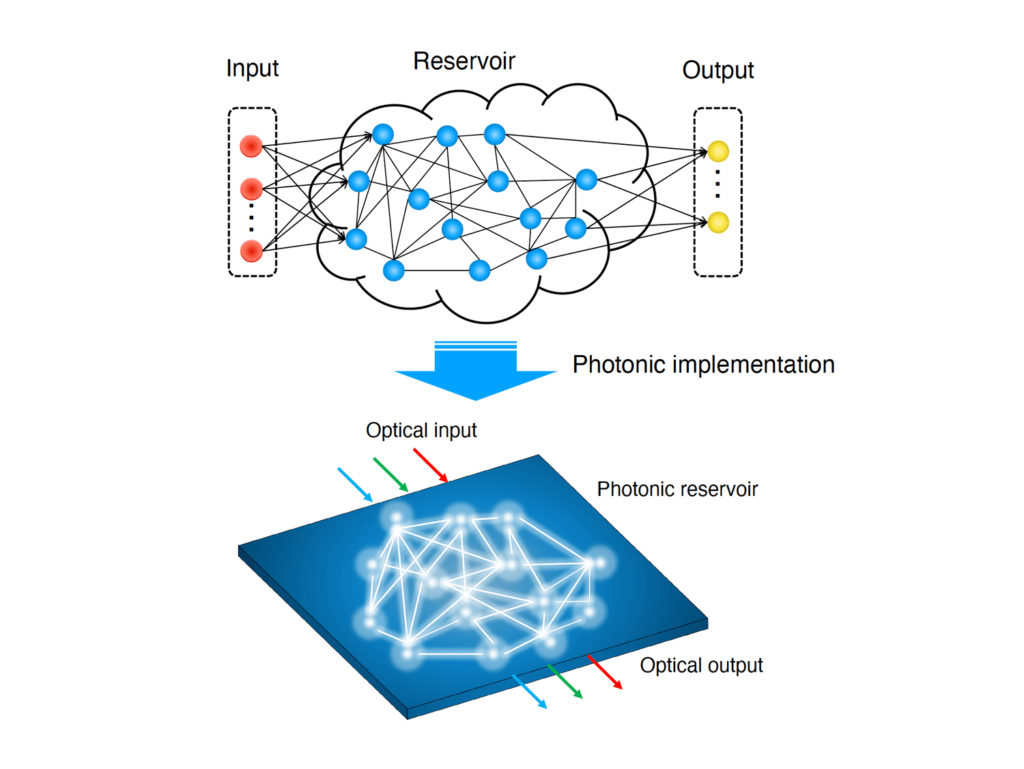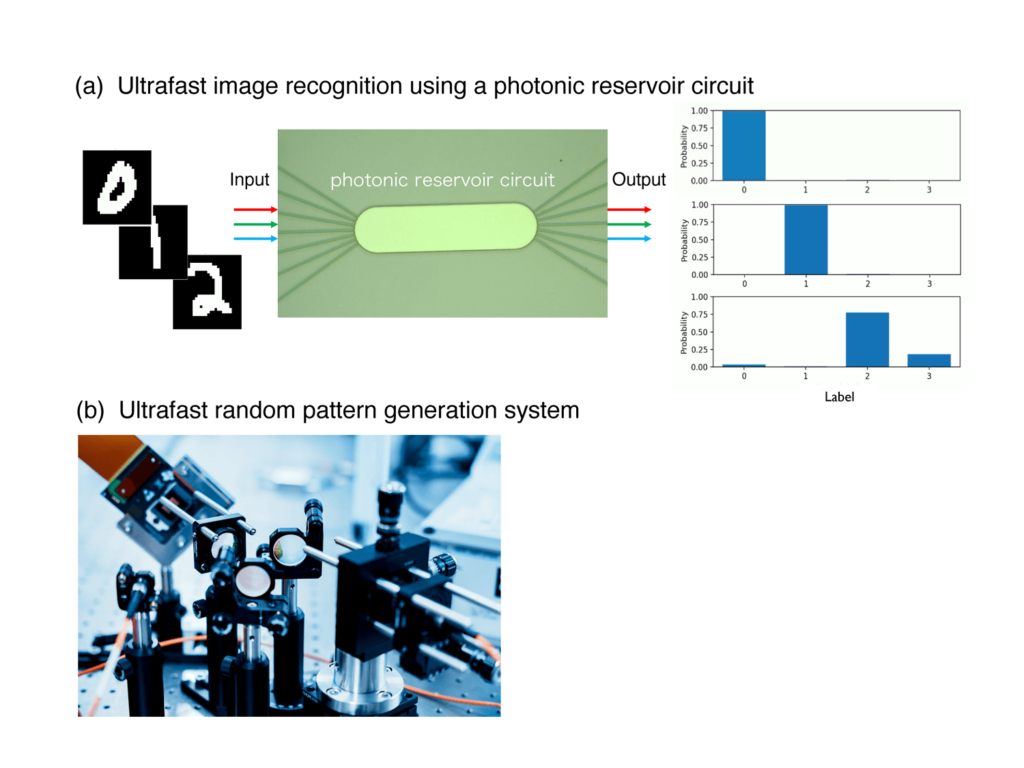COMPUTING
Photonic neuro-inspired computing
The recent rapid advancement of machine learning technologies has been driven by massive computing power, developments in special-purpose hardware, and the availability of large datasets. Although the accelerated increase in the volume of data in modern society enables the development of larger and more complex machine learning models, it poses considerable challenges for present electronic computing hardware in terms of both computing speed and power consumption. Such issues have emerged as a major bottleneck for artificial intelligence (AI) and motivated the development of novel AI computing hardware and concepts.
A target of our lab is to develop photonic neuro-inspired computing with extremely high performance in terms of computing speed and energy efficiency, and then apply it to cutting-edge science and technology fields. Our recent research has focused on the development of photonic reservoir computing (Fig. 1). Reservoir computers use networks of random connections and nonlinearities called reservoirs. A reservoir generates a large number of complex behaviors driven by an input and is used to solve specific computational problems. Despite simple training, high computational performance can be achieved.

Figure 2(a) shows a photonic reservoir computing circuit developed in our laboratory. Using a photonic reservoir combined with a random pattern projection system [Fig. 2(b)], ultrahigh-speed image recognition can be achieved over 10 giga frame rates. With this technique, we aim to pioneer a new high-speed information processing technology that can capture ultrafast phenomena that have not been observed before.

